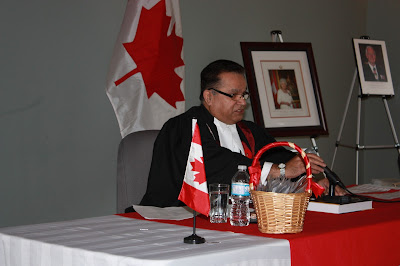Last week I was invited by the Institute for Canadian Citizenship to participate as a Roundtable Discussion Facilitator as part of their twice-yearly Building Citizenship program at Fort York.
It’s a unique initiative that deserves attention. Just prior to their Citizenship Ceremony, new Canadians are introduced to existing citizens for a welcoming discussion reflecting on what it means to be Canadian.
 |
| "What does it mean for you to be here today?" |
I found the experience quite rewarding. I was born in Canada, and I take a lot of things about citizenship for granted. In this day and age, it is easy to become jaded or even wary about thoughtless patriotism.
Listening to the backgrounds and stories of the new Canadians was meaningful—these are people that have, with great deliberation, chosen to make this country their home. They’ve uprooted their lives, spent years going through the process, and have fully committed themselves to becoming Canadian and part of our community.
Reflecting on their journeys has given me a deeper appreciation for the simple freedoms (and responsibilities) we have in Canada.
 |
| The Judge presiding over the Ceremony |
Every natural-born Canadian should witness at least one Citizenship Ceremony. It’s a solemn but joyous affair.
Highlights for me included:
- Affirming the oath of citizenship (yes, it does require you to pledge allegiance to the Queen)
- Hearing 40 newly-minted Canadians singing ‘O Canada’ — an emotionally charged moment
- Enjoying a thoughtful lecture by Wayne Reeves, Chief Curator of Museums and Heritage Services for the City of Toronto, on the meaning of Remembrance Day in the context of Fort York.
The strength of a nation lies in its people, and I’m proud to say we became 40 stronger last week.
 |
| 40 new Canadians swearing the oath of Citizenship |
 |
| Hearty first meal provided by The Meeting Place / West Neighbourhood House |









